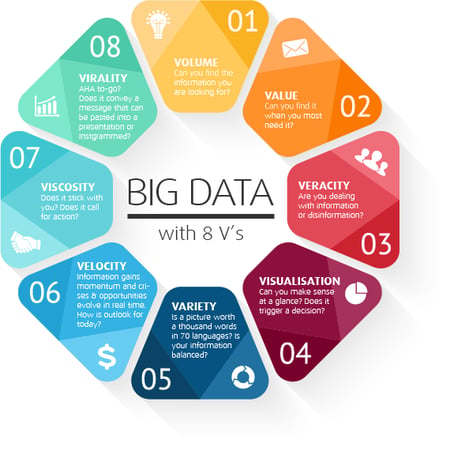There is a bright future for the manufacturing industry. Challenges are appearing everywhere, and a challenge is the perfect opportunity to do something different – and make money. The manufacturing industry is primed to grow massively. The UK government are relying on them with all the challenges Brexit delivers to lead the economy over the next few years.
And much of this leading will come through innovation. R&D tax credits are there to support businesses that innovate. 2020 promises to be an exciting year in the manufacturing industry. There will be a great deal to see, so let’s dive straight in and look at the 2020 Trends to Watch in The Manufacturing Industry –
Augmented Reality

The way that Pokemon Go took over the world a few years back was a signal to us all that the times, they are a-changing. When a manufacturer uses the benefits of Augmented Reality or AR, they can make headway by:
- Having more effective training
- Improving production speed
- Reducing costs
- Increasing safety
All of these together from one piece of software is impressive stuff. AR can help the employees with complex tasks and aid quality assurance. This means that the end product is more reliable, boosting customer satisfaction. Definitely something we are all looking for.
Augmented reality takes the real world and adds a layer of software interaction to it, so the user can get extra information to what the planet delivers. This enables the user to make better decisions, improving the overall performance.
3D Printing
Something that has felt like it has been on the horizon for many years now, 3D printing looks set to continue to go global in 2020, enabling manufacturers to print machine spares in a matter of minutes rather than waiting days or longer for a part to be manufactured and delivered. It is this level of disruption that can supercharge the way a business works, as long as they know which direction to turn.
3D printing was long seen as something that would enter the home and cause manufacturers an issue, but the tech isn’t quite there for home use and specialist knowledge will keep manufacturing businesses ahead of the curve here for some years to come.
3D printing is a phenomenon that will change the world in the future. It is being used in schools, so expect graduates to come out of the school and university system already used to making the most of this technology. We have seen Millennials and Generations X and Y add something new to the workplace. The next step is kids that have grown up used to cutting edge tech like this.
Internet of Things on an Industrial Scale
While there have been many predictions about the impact the Internet of Things or IoT will have on the way we live our lives, there will also be a massive uptake in the manufacturing sector. 2020 will see this step up to the next level and become one of the areas companies invest their hard-earned cash on.
One study, by Boston Consulting Group, suggests that as much as $267 billion will be spent on industrial IoT through major industries. Expect manufacturing to take a large slice of that pie. The IoT will change the way we all live, that’s for sure. For a manufacturing company, it could accurately record data that is currently gathered by human, as well as making any adjustments necessary to improve productivity or quality, for instance.
Imagine machines that are able to communicate with each other and make decisions. This is where the Industrial Internet of Things and our next trend come together to make a manufacturing industry fit for the next set of challenges.
Artificial Intelligence
 There is a great deal to be said for AI and the role it can play in the future of manufacturing. We spend a lot of cash currently on making improvements to our equipment and our team. What about a piece of kit that not only carries out a task, but learns from it too? That’s the goal of AI, doing all the mundane tasks that are either too time-consuming or too laborious for the people of machinery we already have.
There is a great deal to be said for AI and the role it can play in the future of manufacturing. We spend a lot of cash currently on making improvements to our equipment and our team. What about a piece of kit that not only carries out a task, but learns from it too? That’s the goal of AI, doing all the mundane tasks that are either too time-consuming or too laborious for the people of machinery we already have.
Take a local company to us called Word Nerds. They build programmes that sift through masses of data. Looking for the important items that will change the way you work. It saves time and money, assessing and identifying the right data at the right time.
Automation
When we are told that automation could change the face of the jobs market, it is manufacturing that often springs to mind. The amount of money spent on automation and robots is in the staggering tens of billions of pounds every year. Manufacturers are spending that fort a long-term return on their cash.
Integrating robots or machines into existing processes is the ongoing challenge. And it is in this that R&D tax claims come to the fore. If you have designed a new machine, then it is all the teething problems that the tax man wants to know about in return for a sum of cash. R&D tax credits are all about rewarding companies that do something different to get better. If you are in that situation then drop us a line an we’ll see how we can help.
Automated workplaces are things of science fiction movies. But the fact is that they are closer than we think. 2020 will see this trend move onwards and upwards. Automating parts of your manufacturing business is seen as a way to save money and increase productivity. Future-proofing our businesses is all about making those decisions now that will affect the coming years.
Big Data
Companies have been collecting data for a number of years and managing it has been one of the challenges for the manufacturing industry. Storing this data to industry standards with GDPR hitting the EU last year has been a top priority. But 2020 will see this data being used to drive decisions. 
Big data is out there all the time, and by using more IoT processes than ever before, we can get snowed under the facts and figures that are being collected and stored day after day. But big data offers up a series of questions that manufacturing businesses need to answer, such as –
- How do we gather the data that drives our business?
- How do we utilise this to make the right decisions?
- Does the data we collect reflect the reality of our business?
- How can we make swift improvements based on the data we have?
- Are we the best people to read and analyse this data?
Continuing to do what we have always done isn’t necessarily the best way to move into the future. 2019 is the year where manufacturers need to look at all the metrics relating to their business and decide if they are still relevant. Reflecting on the information at hand is the best first step on the road to success.
Recruitment and Training
The manufacturing industry has been suffering with a shortage of skilled people for a number of years. The UK government has tried to help by pushing STEM subjects in schools and universities. The industry is looking with eager eyes at the UK’s immigration policy post-Brexit. If they can’t access the best talent, then companies will worry about their ability to get the best from their talent. Recruitment will be a hot topic in 2020, with the best talent being fought over by the top companies.
Another way to get to the top in manufacturing is to train people effectively. The tech solutions discussed elsewhere in this article can often be easily applied to training. Examples being 
- Augmented reality providing training situations that might be too dangerous in real life
- Artificial Intelligence giving human recruits guidance
- Big data giving the information needed on the most pressing recruitment needs
As manufacturing companies need to push forward with ideas and implementation, expect to see training budgets increase.
2020 is looking set to be a massive year for the manufacturing industry. Change is afoot all the time in the digital age, with solutions popping up as quickly as the problems they are designed to resolve. If you are in manufacturing then you should be aware of the trends happening right now, under our noses.
Advancements in technology, equipment and automation are three huge things that are having an effect on the manufacturing industry. These have led to trends that we’re expecting to see boom in 2020, something that this article has looked at in detail. If you are a manufacturing business that innovates then we can help you with the finance. R&D tax credits are a great way to secure the money that can boost your business. Drop us a line to find out more.